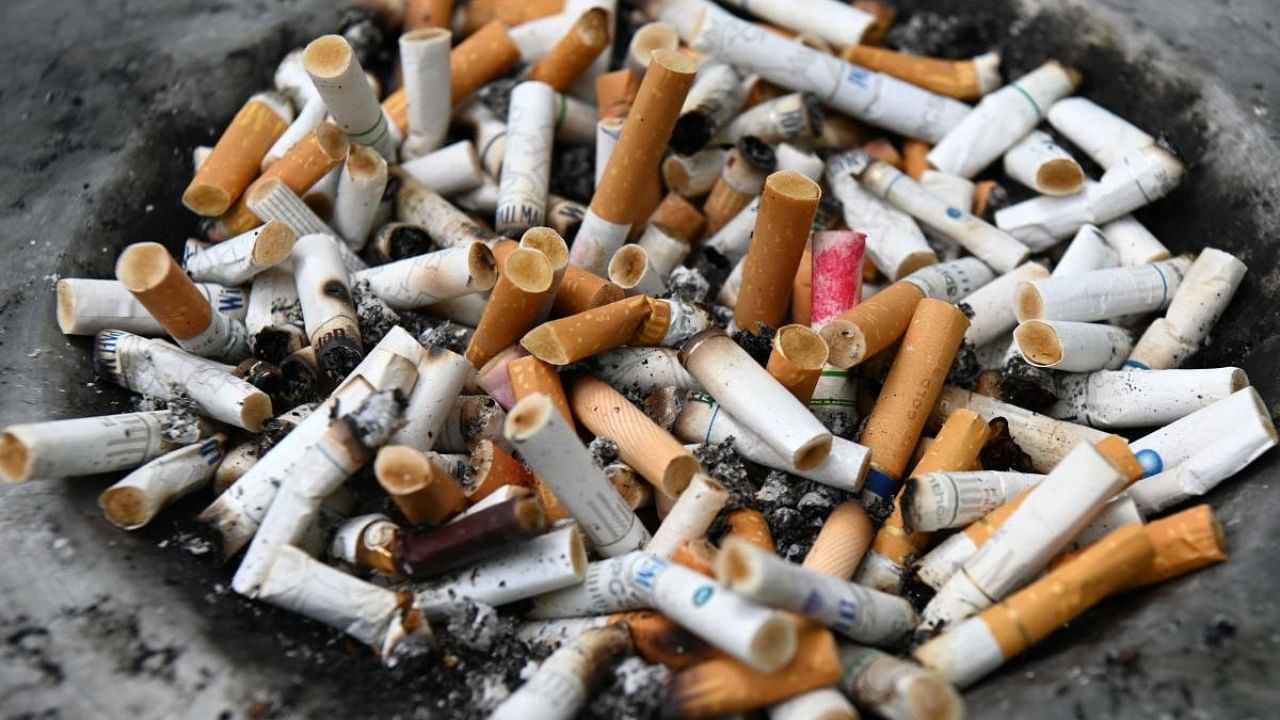
Though the use of any kind of tobacco has reduced to 27.3% as per National Family Health Survey-5 (NFHS-5) from 34.3% (NFHS-4) among men in Karnataka, chewing gutka or pan masala with tobacco has increased to 10.4% (NFHS-5) from 9.6% as the younger generation is getting more addicted to smokeless pan chewing.
The percentage of smokers among men has come down to 12.2 from 17.6, in urban and rural areas.
Bidi puffing has also reduced to 3.6% from 8.3% in the state. The study was conducted involving 30,455 female and 4,120 male respondents.
As per the NFHS-5 report, rural people top the list of those who smoke less than five cigarettes in the past 24 hours.
A total of 69.3 % people, including 63.3% urbanites and 74.2% rural people smoke less than five cigarettes in 24 hours.
Among those who smoke five to nine cigarettes a day, urban people are on top with 18.3%, when compared with their rural counterparts who account for 15%.
Again, urban people top the list of those who puff cigarettes between 10 and 14 a day, at 11.3%, while rural people account for 3.9%.
At national level
A total of 14.6% urban people smoke cigarettes, while ruralites account for 12.5%.
Around 13.2 people between the age group of 15 and 49 smoke cigarettes and there is a slight increase among people in the 15-45 age group at 13.3%.
Smoking bidis is higher in rural (8.3%) areas than urban (4.5%), according to the NFHS-5 report. Chewing pan masala or gutka among women in the age group of 15 to 49 is 1.4% at the national level.
While 1% women chew it in urban areas, about 1.6% chew it in rural areas. Chewing smokeless products is at 14.5% among men in 15-49 age group, while it is about 14.2% in the 15-54 age group, the report said.
Karnataka State Tobacco Control Board high-powered committee member Dr Vishal Rao said once addicted to tobacco products like cigarettes and gutka, it is very difficult to give up. In India, only 6% of people who are addicted to such vices give it up. Hence, the people should stay away from these bad habits, he said.
About 30% of youths above 18 years of age are still chewing tobacco items. Due to this, cancer which used to be diagnosed above 60 years of age earlier is now being detected in people aged between 30 and 40 years, he said.
Owing to urbanisation, women in urban, semi-urban and slums are using tobacco and falling prey to diseases like cancer. Use of gutka is high in North Indian states. There is an urgent need to control its use as about 10 lakh people are dying of tobacco-related diseases in the country each year, Rao said.
Kalaburagi’s Kidwai Cancer Hospital head and oncologist Dr Gururaj Deshpande said chewing gutka is still constant. There is a misconception in youths that their tension will reduce if they chew gutka and it will give strength to work more.
“We are seeing 24 to 25-year-old youths getting cancer. Women are also being diagnosed with lung cancers due to passive smoking,” he added.
Kalaburagi-based economist Sangeetha Kattimani said India enacted a national legislation - Cigarettes and Other Tobacco Products Act-2003 (COTPA) - to protect the health of non-smokers and reduce tobacco consumption. However, even a decade after enacting this law, its implementation remains sub-optimal and variable across states.
Karnataka has shown leadership on this front by enacting a state law and implementing COTPA at district level, she said.